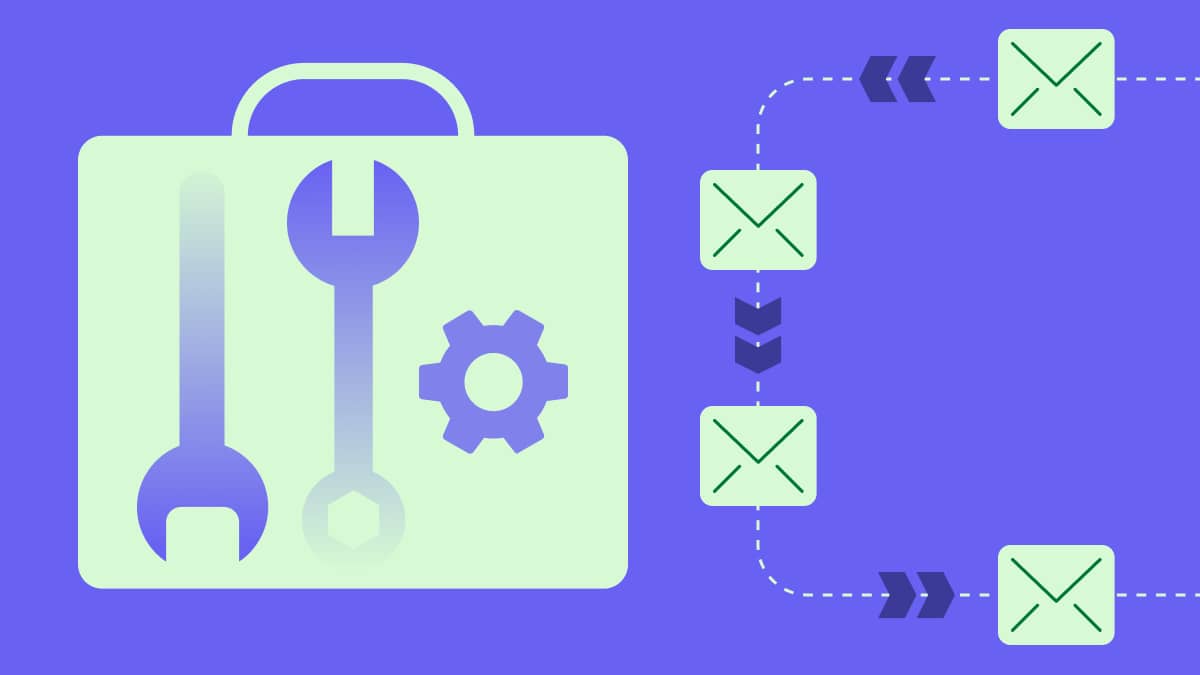Keeping construction projects on track can be tough when teams juggle multiple tools and constant updates. The right construction project management software brings everything together, making collaboration smoother and progress easier to see.
In this article, you’ll explore the best construction project management software for small teams and learn about the features that help you deliver projects more efficiently.
1. Pipedrive
Pipedrive is a customer relationship management (CRM) platform that helps teams manage sales pipelines, track client communications and automate project workflows.
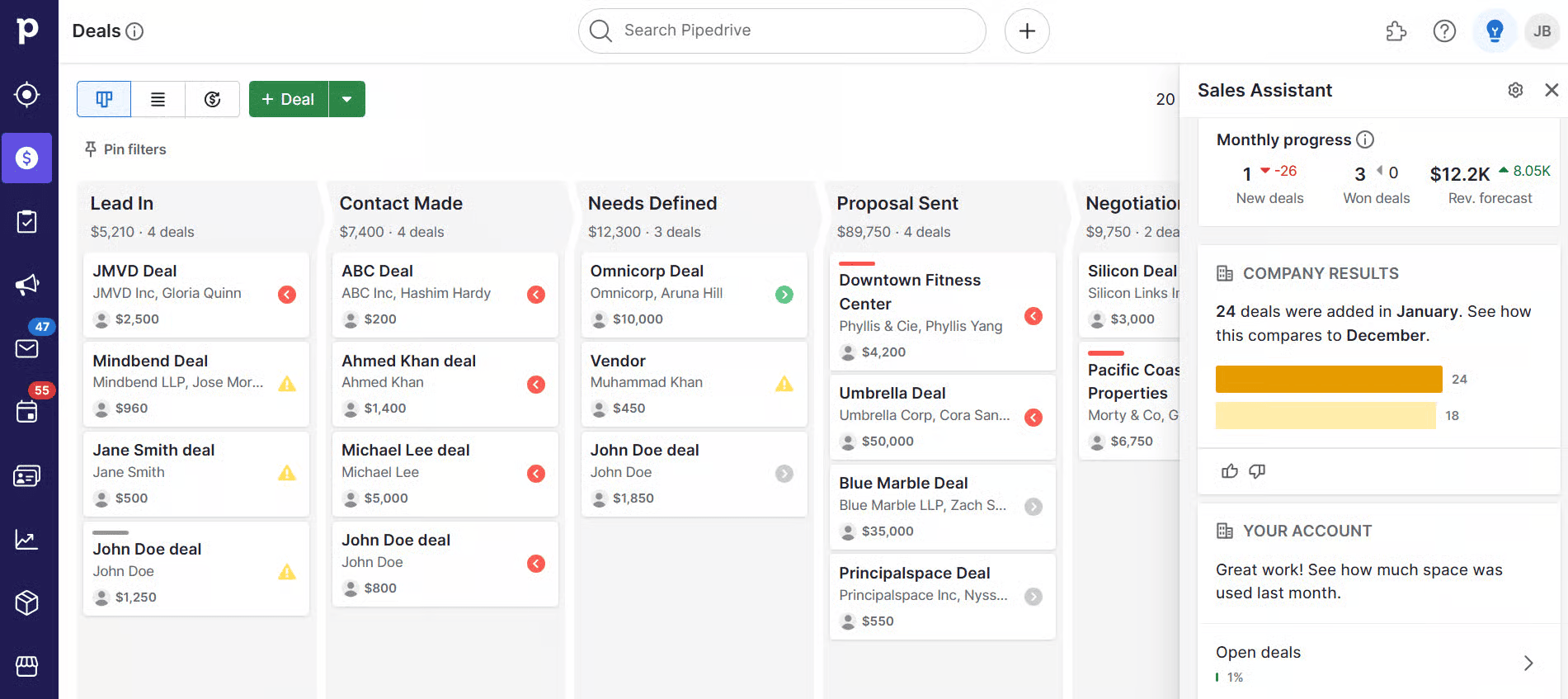
While it’s not built exclusively for the construction industry, its flexibility means you can tailor it to fit the way your team works.
What stands out:
Easy to use and quick for teams to adopt
Strong documentation and 24/7 customer support
Scales well as your team or deal volume grows
Worth noting:
Some workflows may need tailoring for complex builds
No built-in RFIs or drawing markup
Reporting is more sales-focused than job-costing heavy
The challenges it solves
Pipedrive is packed with features to tackle some of the most common bottlenecks in construction project delivery.
Challenge | How Pipedrive Helps |
Disconnected communication between field and office |
|
Losing track of customer interactions or project progress |
|
Manual admin tasks slowing down operations |
|
These tools make it easier to stay organized and keep your team focused on what moves projects forward.
Belgian modular house company Bao Living uses Pipedrive to manage its lengthy customer lifecycles. With the platform’s built-in progress tracking, the team has complete visibility from first contact to project completion. Workflow automations help them keep engagement high with prospects and customers.
As Benjamin Eysermans, CEO and Co-founder at Bao Living, says:
Who it’s for
Pipedrive’s customizable setup and strong project management automation make it a good fit for small to mid-sized contractors.
The platform is ideal for teams who want better control over project delivery without a huge investment or the complexity of an enterprise resource planning (ERP) system.
Pricing
Pricing plans start at $14 per user per month and go up to an affordable $99 for the most advanced package.
2. Procore
Procore is a cloud-based construction management platform. It covers everything from pre-construction to execution and closeout.
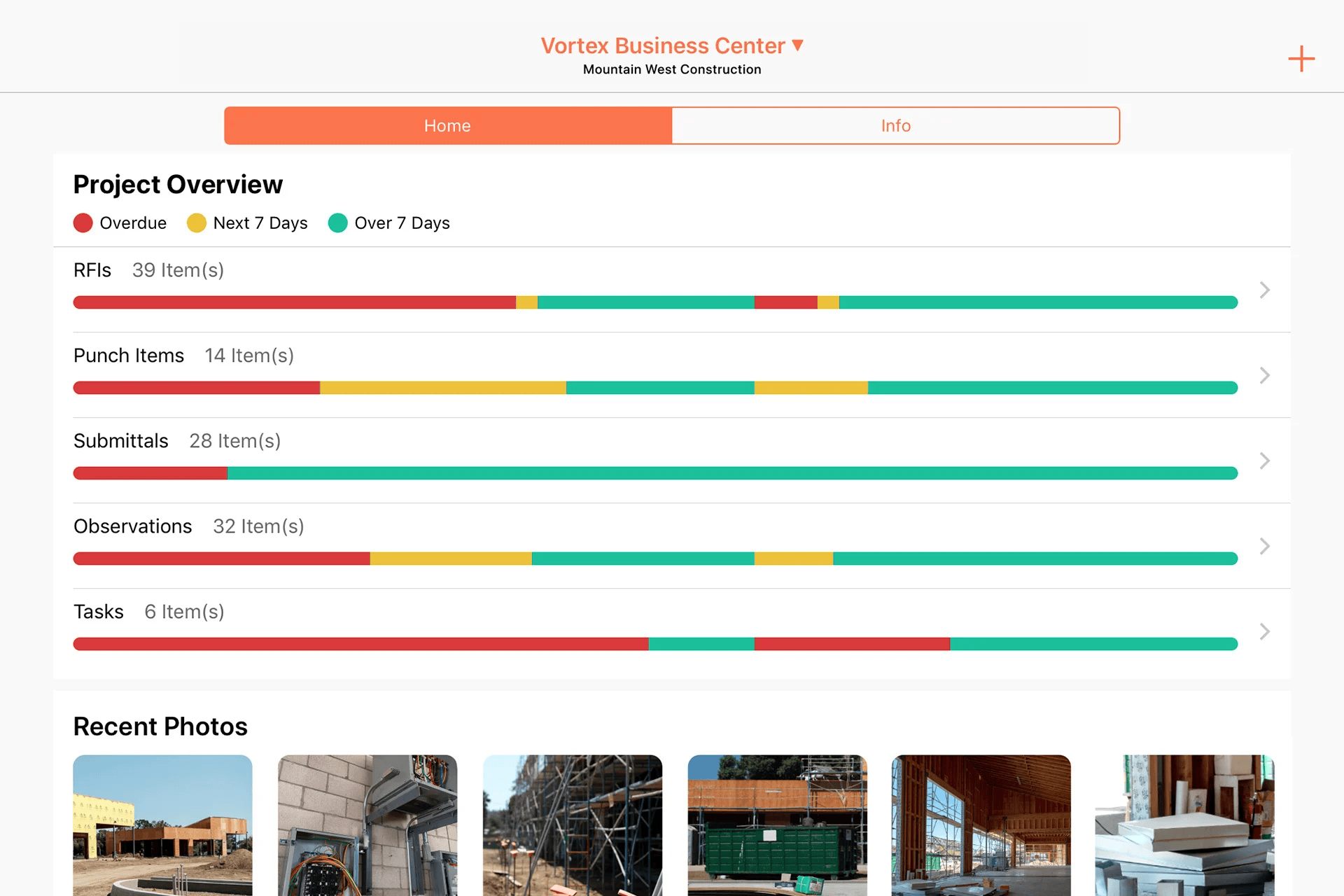
Procore’s project management solution is focused on real-time collaboration tools that bridge communication between site crews and office teams.
What stands out:
Purpose-built for construction workflows
Mobile-friendly tools keep field crews productive and informed
Strong version control and centralized documentation reduce costly mistakes
Worth considering:
May be more than smaller teams need in terms of scope and cost
Setup and onboarding take time, especially with advanced features
Requires a dedicated admin to get the most from integrations and reporting
The challenges it solves
Procore is designed to fix common breakdowns that happen when teams, tools and data aren’t properly connected.
Challenge | How Procore Helps |
Project information spread across different software solutions |
|
Missed deadlines and confusion over who’s responsible |
|
Errors and rework from using outdated drawings or documents |
|
These tools help reduce delays caused by miscommunication or missing information. For example, a general contractor might use Procore’s mobile app to update punch lists straight from the site.
The office can get information immediately instead of waiting for the contractor to call or email. Real-time communication helps the office spot issues faster and keep projects moving.
Who it’s for
Procore is best for mid-sized to large construction companies running complex projects across multiple sites or teams.
Pricing
Procore offers custom pricing based on your company size, number of projects and features needed. You’ll need to contact their sales team for a tailored quote.
3. Buildertrend
Buildertrend is an all-in-one cloud platform for home builders and remodelers. It covers all aspects of the construction business from planning and design to completion and hand-off.
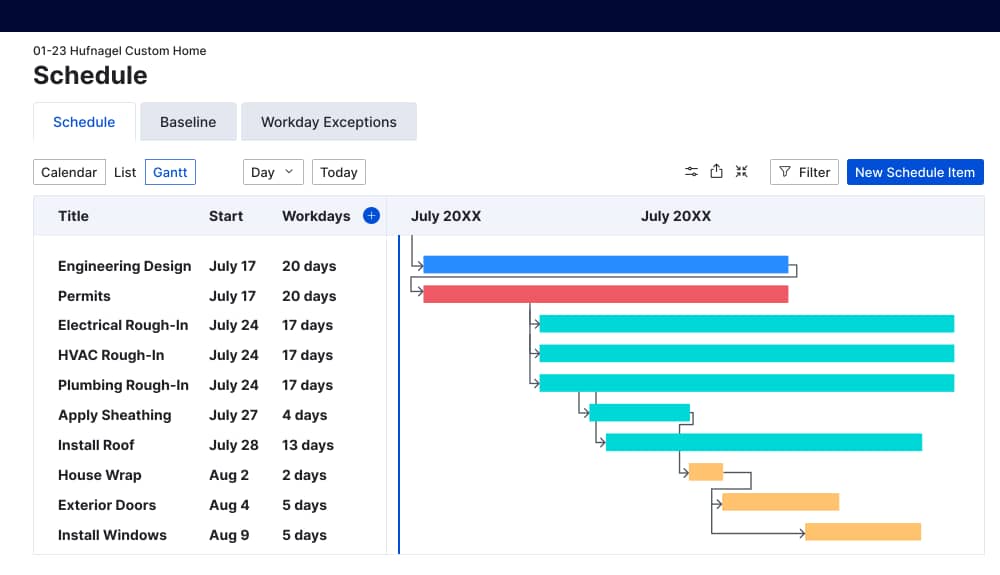
Buildertrend’s project management functionality simplifies planning and improves communication to keep projects running smoothly.
What stands out:
Designed for real-world residential workflows
Unlimited users and projects included in all plans
All-in-one setup connects field, client and financial management
Worth considering:
A higher price point may be a stretch for very small teams
The interface can take time to learn and fully customize
Some users report that setup and onboarding can be time-consuming
The challenges it solves
Buildertrend tackles the common issues that slow down residential builds.
Challenge | How Buildertrend Helps |
Fragmented communication between teams and clients |
|
Missed progress updates or unclear task ownership |
|
Budget surprises and payment delays |
|
These features help keep jobs moving and clients informed without extra emails or phone calls.
For example, a remodeler might use Buildertrend to log daily progress photos on-site. The client can see the update immediately and approve a finish through the portal, keeping the build on schedule without needing a call or meeting.
Who it’s for
Buildertrend is best for growing residential construction teams managing five or more projects a year. The platform works well for builders running multi-phase projects who want one software for all their systems.
Pricing
Buildertrend offers custom pricing based on business size and needs. According to third-party sources, plans typically range from $299 to $499 per month. You'll need to contact their team for a quote.
4. Autodesk Build
Autodesk Build is part of Autodesk Construction Cloud, a suite of tools for managing construction projects from design through handover.
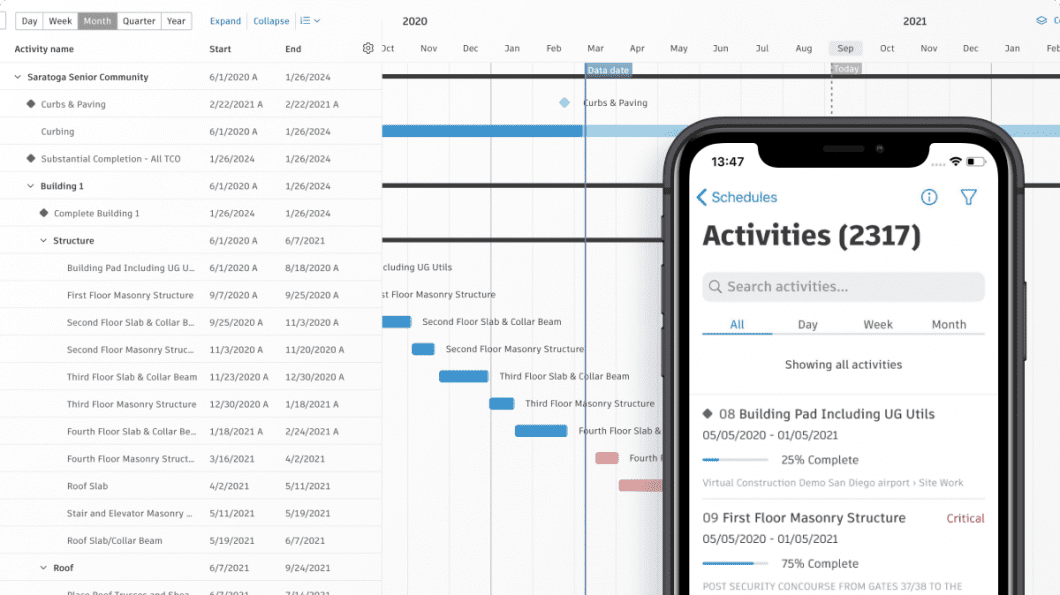
Along with connecting field and office teams, Autodesk Build offers document control and request for information (RFI) management. It’s more technical than other tools on this list, but also more scalable for complex projects.
What stands out:
Strong document and schedule management for complex builds
Integration with Revit, AutoCAD and other Autodesk tools
Scales well for growing teams handling larger or more regulated projects
Worth considering:
The interface and setup can feel heavy for smaller, simpler jobs
Works best if you’re already using other Autodesk tools
Some features may take time to learn or require extra training
The challenges it solves
Autodesk Build tackles common breakdowns in large projects where coordination and document control get complicated.
Challenge | How Autodesk Build Helps |
Slow submittals and missing documents |
|
Disconnected field and office updates |
|
RFI chaos |
|
Poor meeting follow-up |
|
These tools reduce delays and communication gaps across teams. For example, when a field issue becomes an RFI, it’s automatically linked to related documents and meeting minutes. Site supervisors can track decisions and follow through without chasing updates.
Who it’s for
Autodesk Build works well for small but fast-growing construction teams taking on complex, multi-phase jobs with tighter compliance needs.
Pricing
Autodesk Build starts at $140 per month per user, paid annually, which may be steep for small teams.
5. Contractor Foreman
Contractor Foreman is a low-cost, all-in-one construction management platform for small to mid-sized contractors and construction professionals.

Its project management features focus on helping smaller teams stay organized without juggling spreadsheets or multiple apps.
What stands out:
Affordable pricing
Includes tools that many competitors charge extra for (like permit and inspection tracking)
Good mobile access for jobsite updates
Worth considering:
The interface feels dated compared to newer platforms
The number of features crammed into one tool can be overwhelming
Some users say certain functions are basic compared to standalone alternatives
The challenges it solves
Contractor Foreman tackles the coordination issues and admin overhead that slow down smaller construction crews.
Challenge | How Contractor Foreman Helps |
Scattered project info across tools |
|
Missed updates and unclear responsibilities |
|
Permit delays and inspection bottlenecks |
|
These tools give small teams a clear view of progress without context switching. For example, a contractor might normally track deliveries in a shared Google Sheet. With Contractor Foreman, they can log a missing materials delivery directly in the tool, saving time and making the process easier.
Who it’s for
Contractor Foreman is best for small contractors who want to stay organized and compliant without spending a lot. It suits teams managing multiple jobs but without the need (or budget) for a complex setup.
Pricing
Contractor Foreman starts at $49 per month (billed annually) for the Basic plan. The Plus plan for up to eight users goes up to $125 per month.
6. RedTeam
RedTeam is software for construction project management built by experienced contractors who understand the real demands of construction businesses.
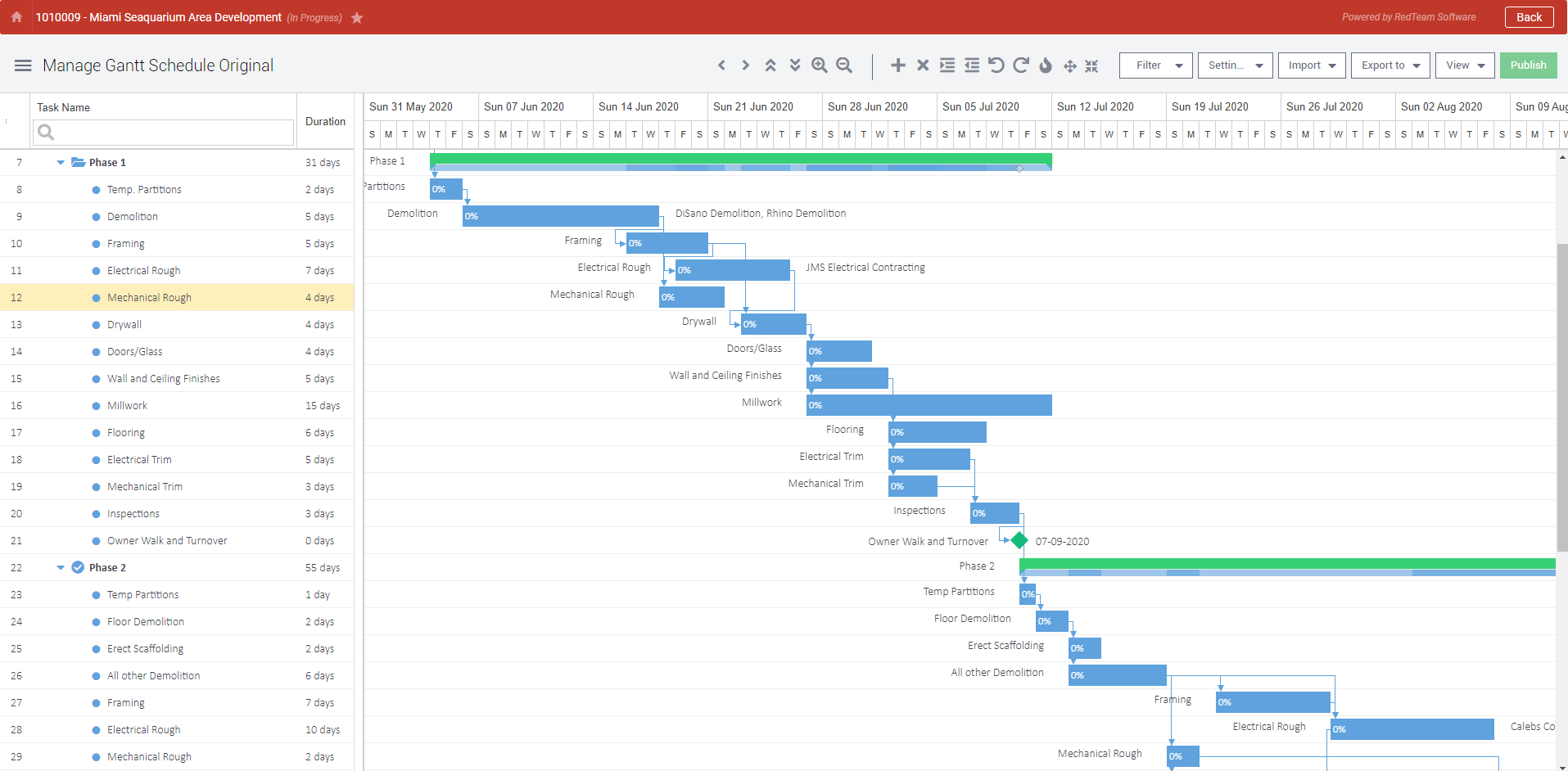
Designed to give you total control from pre-construction through closeout, RedTeam focuses on simplifying workflows and financial management.
What stands out
Built by contractors, so the workflows reflect how real jobs run
Pricing scales with active project value, not per user, so larger teams aren’t penalized for growing (though there is a flipside to this, as you’ll see below)
Good balance between depth and ease-of-use, especially for companies new to construction management software
Worth considering:
As pricing is based on active project value, it may be less predictable for project teams managing fewer builds
Integrations with other software may incur additional costs
More suitable for growing businesses due to its comprehensive features
The challenges it solves
RedTeam’s contractor-driven features address common construction hurdles in one cloud-based platform.
Challenge | How RedTeam Helps |
Delays from mismanaged change orders |
|
Poor communication with subcontractors |
|
Lack of visibility into project finances |
|
These tools help construction teams keep projects on track without juggling separate systems.
For example, say a subcontractor requests a change on-site. The project team can update the scope in RedTeam. The platform then auto-generates a change order and notifies all stakeholders without manual input.
Who it’s for
RedTeam is best suited to growing general contractors who need stronger cost controls.
Pricing
RedTeam’s pricing starts at $729 per month for up to $5 million in Active Project Value (APV).
7. Fieldwire
Fieldwire is a jobsite management platform built for day-to-day coordination between field and office teams.

It connects work done on-site with the documentation and updates needed to keep projects on track.
What stands out:
Strong field-first features like task time tracking, punch lists and photo documentation
Clear audit trails and version control for RFIs and submittals
Easy for crews to pick up and use without much training
Worth considering:
Budgeting tools are more basic than full accounting integrations
Core features like RFIs and submittals are only in the higher-tier plans
No built-in construction estimating or bidding features, unlike some all-in-one platforms
The challenges it solves
Fieldwire addresses the everyday disconnects that slow down execution and complicate follow-ups on construction sites.
Challenge | How Fieldwire Helps |
RFI delays and confusion over next steps |
|
Lost or outdated submittals |
|
Budget tracking scattered across spreadsheets |
|
Teams working from outdated project plans |
|
These tools help small teams keep jobs running without having to leave the field to update spreadsheets or chase down approvals.
For example, say a foreman spots a site issue and submits an RFI directly from their phone. They can link to the drawing and get an answer, without switching apps or sending emails.
Who it’s for
Fieldwire works best for hands-on construction teams including general contractors and project managers who need a fast, mobile way to coordinate jobsites.
Pricing
Fieldwire’s Basic is $89 per user per month (billed annually). Small teams can start with the free plan and scale up gradually as needs grow.
How to choose the right software for your construction business
Not every building construction project management tool fits every team. Here’s how to choose a solution without overpaying or overcomplicating things.
Start with the basics: team size, project type and budget
A five-person remodeling crew has very different needs than a 50-person general contractor managing multi-phase commercial builds. Before diving into features and pricing, take a step back and assess your scope and requirements.
Consider how many team members, subcontractors and stakeholders will use the tool. Then, determine whether you need simple task management or comprehensive features like job costing and submittal tracking for complex builds.
Budget naturally plays a role, but don’t just compare price tags. Compare what’s included. Some tools charge extra for core features like mobile apps or invoicing solutions.
Focus on the real problems you need to solve
What’s slowing your team down now? Choose a tool that replaces clunky workflows and doesn’t add more screens.
Think about your biggest pain points. Teams still tracking schedules in Excel should look for software with built-in dashboards and forecasting tools.
Those relying on constant texts and calls from job sites need platforms with real-time updates and reliable mobile apps. Managing change orders, punch lists and project documents across multiple platforms requires a solution that consolidates these scattered workflows.
Don’t get distracted by fancy features you’ll never use. Choose software that streamlines what’s broken in your current setup.
Make sure your team can use it
A powerful tool doesn’t help if no one can figure it out. Look for software with a clean, user-friendly interface and pre-built templates that simplify project planning from the start.
Good customer support and product onboarding options matter too, especially when you’re getting everyone up to speed. Check how well the software integrates with tools you already use, whether that’s Microsoft Teams for communication or QuickBooks for accounting.
Construction professionals work in fast-moving environments. Your field teams shouldn’t need a laptop or long training sessions to update tasks or log progress.
The right construction project management software should save you time and improve profitability. Use your current pain points to guide your choice. That’s how you find a tool that fits your construction business now and scales with you later.
Download your guide to managing teams and scaling sales
Final thoughts
Choosing the right construction project management software for small businesses can transform how your small team delivers projects.
Pipedrive stands out for its flexible features and strong support. It’s an excellent choice for teams ready to streamline their workflows without unnecessary complexity.
Start your 14-day free trial today and see how Pipedrive can help keep your projects on track and your team connected.



